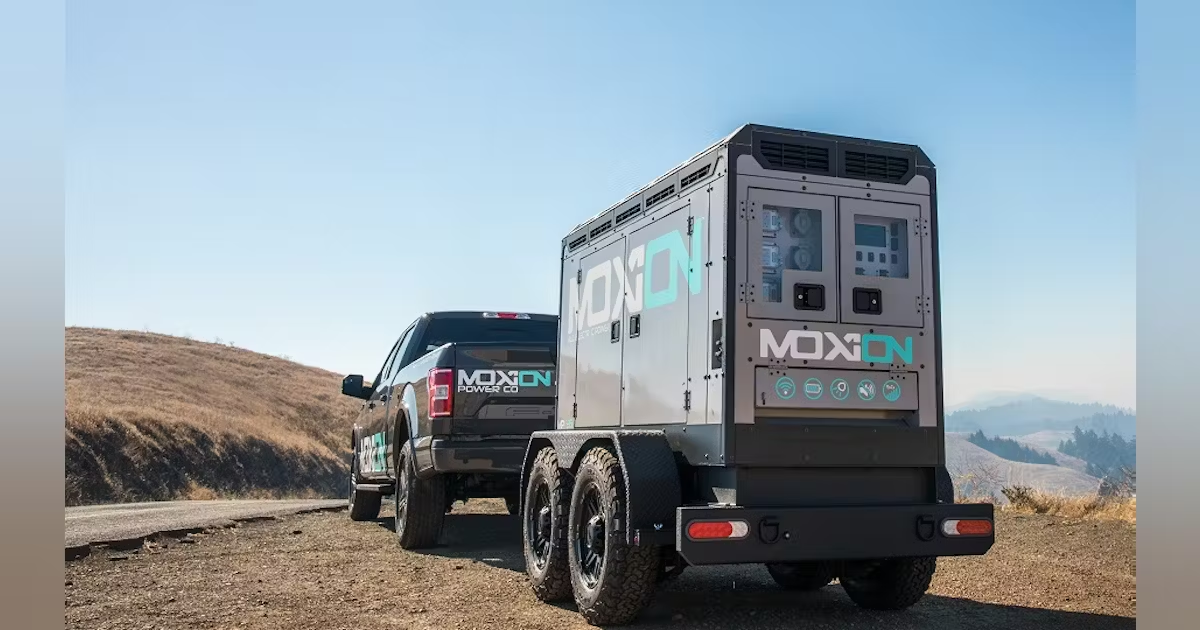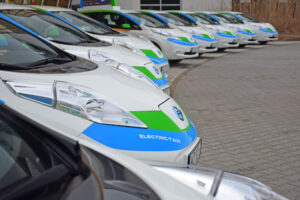At Act Expo 2024, a pivotal conversation took place, shedding light on the critical challenges and innovative solutions in EV Infrastructure. The discussion, hosted by Taylor Steele of SHAED, featured industry leaders Alex Meek from Moxion, Michael Baer from Nugen Capital, and Bryan Jungers from eSource. Here’s an in-depth look into the key topics covered during this enlightening session.

Listen Here
Challenges in Electric Infrastructure
Taylor Steele kicked off the conversation by addressing the significant gap between the current state of the electric grid and the infrastructure needed for widespread EV adoption. “In my experience there’s definitely a gap there,” Taylor noted. “…developers are faced with the fact that power might take five years to obtain and cost a million dollars”. So the question is, how do we bridge the gap
Mobile Energy Storage Solutions
Alex from Moxion introduced a groundbreaking solution to this challenge: mobile energy storage products. “Our company manufactures large mobile batteries designed to tackle infrastructure challenges,” Alex explained. “Our product allows you to rapidly deploy EV charging stations, reducing the setup time from years to mere hours.”
He further elaborated on the technology, highlighting its mobility and flexibility. “We send our mobile energy storage products to a site, and within hours, you’re set up and ready to go. It’s essentially battery and wheels, providing multiple phase AC output modes.”
These types of technological advancements and solutions are critical to transportation electrification but still require coordination and cooperation from utilities. Bryan from eSource brought valuable insights from the utility perspective, focusing on grid capacity and resiliency. “Utilities are very aware of the capacity constraints. Ensuring reliability and resiliency of the grid while integrating new large systems is a complex task,” Bryan noted. “We’ve been exploring mobile and deployable power solutions because they offer a way to support electrification without overwhelming the grid.”

Financial Models for Infrastructure Development
In addition to finding enough power, finding capital can be a barrier to deployment. Michael from Nugen Capital discussed the financial hurdles in deploying such innovative solutions and how NuGen addresses them. “We offer leasing and financing options for mobile energy solutions, which helps reduce the upfront costs for fleets transitioning to EVs,” Michael stated. “Our goal is to remove the financial bottlenecks that slow down the adoption of EV infrastructure.”
He emphasized the importance of flexible financial models, allowing fleets to phase in EV adoption gradually and redeploy assets once permanent infrastructure is in place. “This approach helps to accelerate EV adoption and alleviate bottlenecks in the deployment process,” he added.
Cost remains a significant hurdle in deploying temporary power solutions as well, Alex pointed out. “While the long-term cost benefits of mobile energy storage solutions are clear, the initial expenses can be daunting,” he explained. “Additionally, scaling up manufacturing to meet the demand is a complex challenge that requires substantial investment and coordination.”
Education, Collaboration, and Turnkey Solutions
The panelists agreed that education is crucial in overcoming these challenges. “Helping all stakeholders understand the use cases for these technologies is essential,” Bryan emphasized. “Utilities, in particular, need to be aware of what’s available and how it can fit into their operations.”
The conversation highlighted the importance of collaboration and making solutions turnkey and easy for end users. “Together, we have the technology, the financial models, and the utility expertise to create comprehensive solutions,” Taylor said.
Michael added, “Making it turnkey and easy for the end user will accelerate the adoption here. Often, those bringing solutions to market don’t want to own infrastructure—they just want it to work seamlessly.”
The panel concluded that combining innovative technologies, flexible financing models, and strategic planning with utilities can effectively bridge the EV infrastructure gap. Taylor affirmed, “By working together, we can overcome the challenges and drive the future of EV infrastructure”.
_ _
Written by Taylor Steele
June 2024




